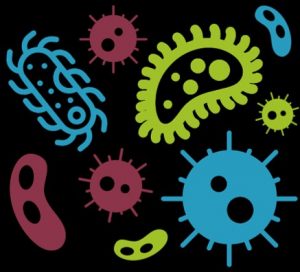Researchers in Japan have discovered a species of bacteria that parasitises a methanogen with a key role in anaerobic digestion. This is the first time such bacterium-on-archaeon parasitism has been observed.
The bacterium was isolated in a two-strain co-culture with host archaeon Methanospirillum hungatei. The source was digestate from a laboratory-scale mesophilic methanogenic bioreactor treating a substrate designed to simulate terephthalate- and dimethyl terephthalate-manufacturing wastewater. The strain could not be grown axenically and is obligately anaerobic and parasitic, depending strictly on M. hungatei as a host and attaching to archaeon-specific host sites. It represents a new family, order, class and phylum in the kingdom Bacillati.
 Prof James Chong, our Bioinformatics WG Lead, said: “This discovery serves to underline how little we still know about a range of interactions in the (environmental) microbiology world, and the potential that could be unlocked for environmental biotechnology by applying additional molecular and bioinformatics analysis to novel systems and challenges”.
Prof James Chong, our Bioinformatics WG Lead, said: “This discovery serves to underline how little we still know about a range of interactions in the (environmental) microbiology world, and the potential that could be unlocked for environmental biotechnology by applying additional molecular and bioinformatics analysis to novel systems and challenges”.
Yet another case that echoes the final phrase of our short animation on Microbes in Wastewater Treatment: ‘The journey to understanding them is just beginning!’
Congratulations to the researchers involved: for more details see here and in the paper below:
Minisyncoccus archaeiphilus gen. nov., sp. nov., a mesophilic, obligate parasitic bacterium and proposal of Minisyncoccaceae fam. nov., Minisyncoccales ord. nov., Minisyncoccia class. nov. and Minisyncoccota phyl. nov. formerly referred to as Candidatus Patescibacteria or candidate phyla radiation. Nakajima, M., Nakai, R., Hirakata, Y., Kubota, K., Satoh, H., Nobu, M.K., Narihiro, T. and Kuroda, K., 2025. Int Journal of Systematic and Evolutionary Microbiology, 75(2), p.006668.


